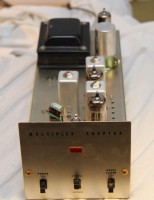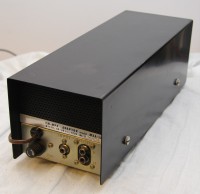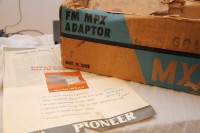-

pioneer MXA-1
  
|
After
the adoption in 1961 of the standard for stereo
broadcasting on FM bands, the production of equipment with
decoders began. The name of the broadcasting method was
adopted as MPX (from multiplex), and the working system
was called "zenith-general-electric" (from the names of
companies that developed almost identical systems and
registered them as a common system - Zenith Electronics
Corporation and General Electric). In the hands of buyers,
however, there were already a large number of stereo
receivers and tuners working in the multicast system and
having an input / output system for cooperation with
external MPX decoders. Pioneer, as a leading exporter of
receivers, had to provide at least some of the buyers of
the SM-Bxxx, SM-Gxxx and SM-Qxxx receivers with devices
that were to enable stereo MPX reception. The company
released two models of tube decoders. The first one was
the matrix MXA-1A with two 6CG7 tubes (a tube
electronically similar to the ECC82). Power was supplied
from a 6X4 / EZ90 lamp. Apart from the MPX input and the
two L and R outputs, the decoder had Mono / Stereo
switches, Noise Filter, i.e. a filter that was also used
later in semiconductor devices, blocking the rest of the
MPX pilot signal at the output. And of course the power
switch. The next model was the MXA-3, sharing the housing
with its predecessor. Electronically, however, it was a
completely different design. Decoding in the matrix system
was provided by two tubes 6AQ8 / ECC85 and 6AN8A. The
half-wave power supply used one silicon diode. The layout
of inputs and outputs and switches is almost identical to
its predecessor. And the main difference - the MXA-3 had a
neon MPX signal indicator instead of a light bulb when the
power is turned on.
    |
Main page
Previous page
Contact
|